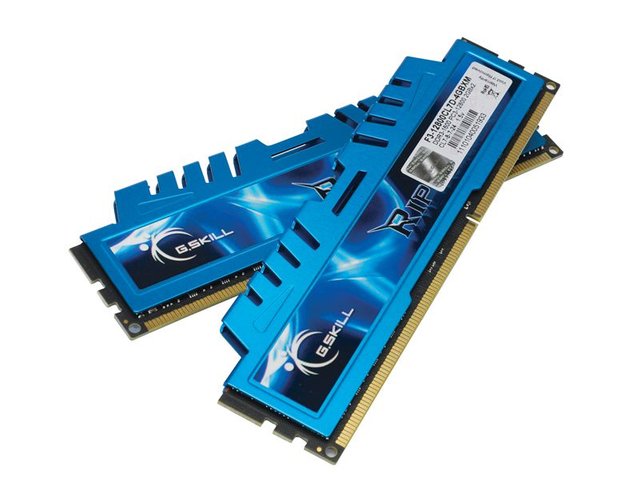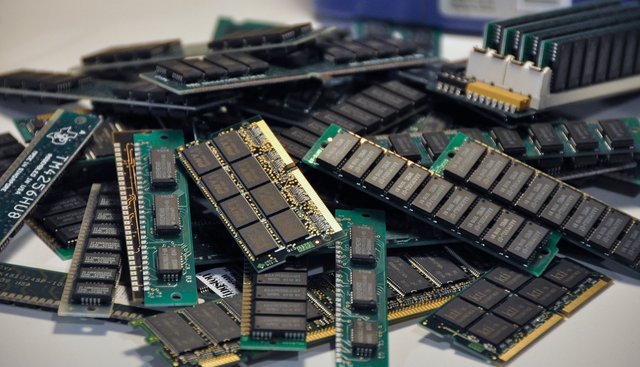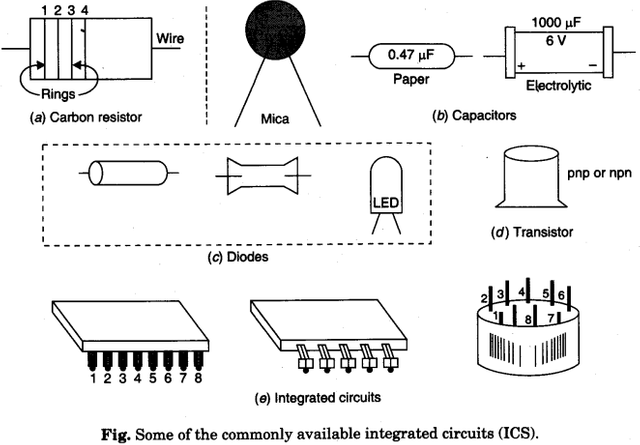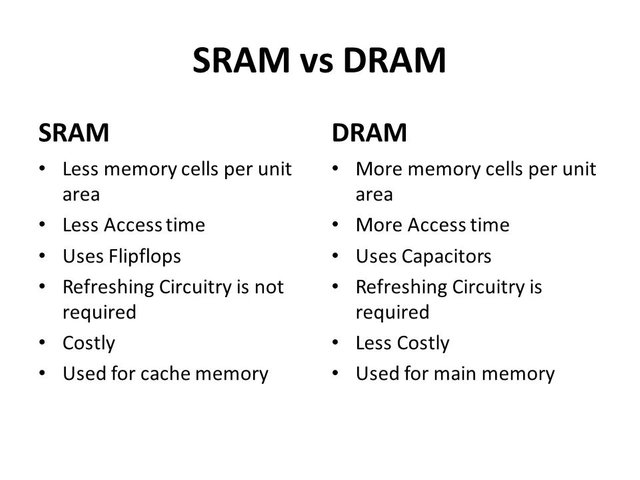Everything you should know about #1 - Understanding your Computer's RAM
Hello everyone,
We all know that RAM is the basic component of any Computer or Digital Device. If you say that it in increases the computer processes by storing necessary resource in it than its partially right. If it is all about speed than why don't we use SSD as they are high speed and advance technology in the place of RAM?
But ever wondered why RAM is so important ?
RAM
- RAM stands for Random Access Memory. By this it mean that it can randomly and directly access any address of a value without following any sequential or linear manner. So we can conclude that RAM is an special device which provides the authority to the processor to access any memory cell at anytime as per the need.
- RAM has to sub-categories i.e. DRAM and SRAM . In this post we will know about DRAM.

DRAM
- DRAM is one of the category of RAM. DRAM stands for Dynamic Random Access Memory which is the actual RAM that we use in our Computers or Smartphones.
- DRAM is designed to achieve high performance at low-cost.
- DRAM works on Transistor and Capacitor technology to store and process the data.
- DRAM has its own advantage and disadvantage based on it use.
- DRAM is volatile in nature so it works until it is getting electric power.

Working of DRAM
- DRAM is made up of millions and billions of transistors and capacitor.
- DRAM actually stores the data in the capacitor.
- Each capacitor can store only 1 bit of data i.e. 0 or 1.
- This 1 and 0 bit is used to define the state of the capacitor. If the capacitor is set than it will represent by 0 bit and vice versa.
- As it is volatile in nature, every capacitor is get refreshed periodically.
- Checking capacitor is a good practice to eliminate any error or flaws.
- 1 Transistor and 1 Capacitor together stores only 1 bit of data i.e. 0 or 1.

Sub-Categories of DRAM
SDRAM stands for Synchronous-DRAM. It has a clock which regulates the data.
- SDR DRAM :- Single Data Rate DRAM, receives or process single data unit at a clock.
- It receives data only at rising edge.
- DDR DRAM :- Double Data Rate DRAM ,receives two unit of data at a cycle.
- It receives data at both rising and falling edge.
Advantage
- It is volatile and provides high performance
- Lower cost
- Platform availability(computer,smartphone,etc)
- Advanced DDR Generations (DDR 3 ,DDR 4)
- Requires lower number of data bus than SRAM
Dis-Advantage
- Temporarily stores data
- Power cut off result in data loss
- Consume more power than SRAM
- Periodically refreshing is needed (Capacitor and transistor)
- Expandable scope is less than SRAM
DDR RAM

DDR RUNS ON 400MHZ
DDR 2 RUNS ON 800MHZ
DDR 3 RUNS ON 1600MHZ

That's all in this post...
If you like the post DO Upvote else you know where is FLAG button.
Tweeted this post for all
good one . you can write about GPU - CPU differences as well I guess
(as seen on @indiaunited | IndiaUnited@Discord )